MWC 2016: LG G5 smartphone has modules to add functions
- Published
LG's phone has swappable parts that enable extra features
LG has announced a modular Android smartphone that can gain extra functions via add-on parts.
Components are plugged in by pulling off the base of the G5 phone and swapping it for an alternative unit.
Google is known to be working on a modular phone of its own, but the concept is far from mainstream.
One expert said the idea would help LG stand out from its rivals, but added that it was too soon to know whether it would turn around the firm's fortunes.
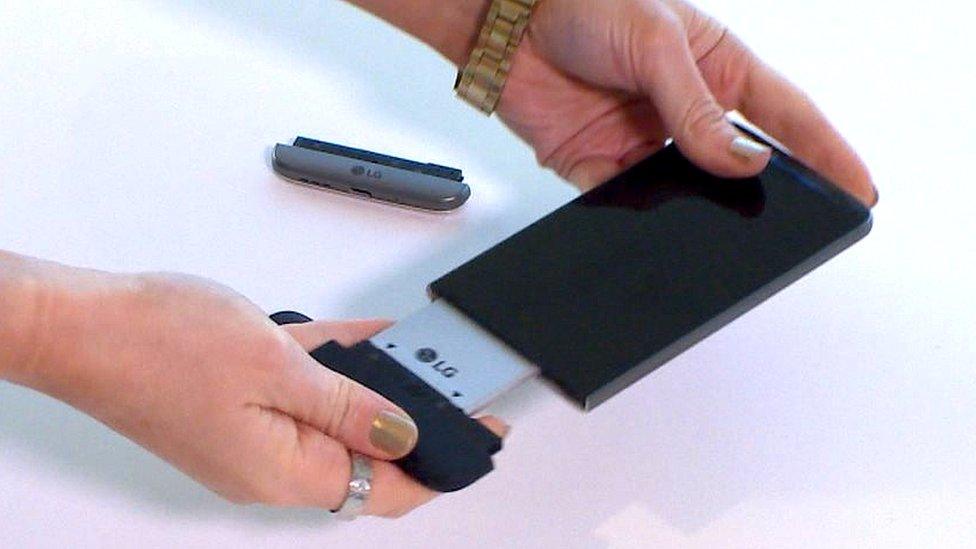
The G5 has a 5.3in (13.5cm) display and removable battery
The firm also announced new virtual reality kit and a remote control robot at its Mobile World Congress press conference in Barcelona.
In January, LG reported that its smartphone shipments, external had fallen by 2% in 2015 despite the market as a whole growing by about 10%.
Plug-in parts
LG revealed two optional modules - which it calls "friends" - alongside the new mobile handset.
One is a 32-bit digital to analogue converter (DAC) made by the audio specialist Bang & Olufsen, which it says makes the phone capable of playing sounds at a higher resolution - meaning music should be more detailed when heard via good quality headphones or speakers.

One of the first modules is called the LG Hi-fi Plus with B&O Play
The other module is a camera controller that the company says should make it easier for owners to take pictures using only one hand. It features a dial for zooming and a button to take photos among other controls, and also provides a 40% boost to battery life.
A spokesman for LG told the BBC its engineers were working on further modules, and it hoped other third-party manufacturers would also add to the ecosystem.
Switching between modules involves pulling out the phone's battery and attaching it to the new part. Although this makes the action more fiddly, it does have the benefit that the battery can be easily replaced, unlike in many other handsets.

The LG Cam Plus module adds manual controls for the phone's cameras and extends its battery life
Another unusual feature about the phone is that it comes with two camera lenses on its back.
One is a normal lens, while the other creates 135-degree wide-angled shots that LG says offer a larger field of view than the human eye or any other smartphone.
This can be useful for capturing landscapes or group shots of people. However, the wide-angled photos only have a resolution of eight megapixels - half that of those taken via the other lens.
The phone also has an "always-on display", which uses part of the screen to show the user the time and notifications without them having to wake it up. Despite its name, the display does turn off when the handset detects it is in a pocket.
Virtual reality
LG has also followed Samsung in launching its own virtual reality kit.
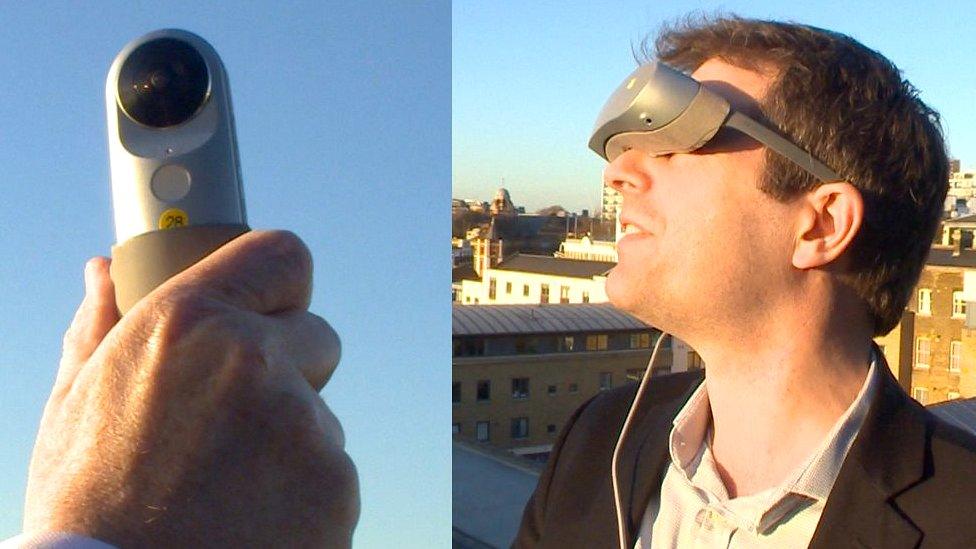
LG's 360-degree camera works with other handsets, but its VR headset only supports the G5 at this point
Unlike its domestic rival's headset, LG's 360 VR does not use the phone as a screen but rather features two built-in displays of its own - one for each eye.
The advantages are that the machine:
is smaller and lighter than Samsung's Gear VR
can show higher resolution images, at 638 pixels per inch
allows the phone itself to be used as a touchscreen control
LG has yet to announce its price, but has acknowledged that it will be more expensive than Samsung's.
The company also showed off a handheld camera that can capture 360-degree videos, which can be watched on any VR headset or uploaded to Facebook and YouTube.
Unlike the headset, the camera will be compatible with all phones running Android 4.2 or higher or Apple's iOS system.
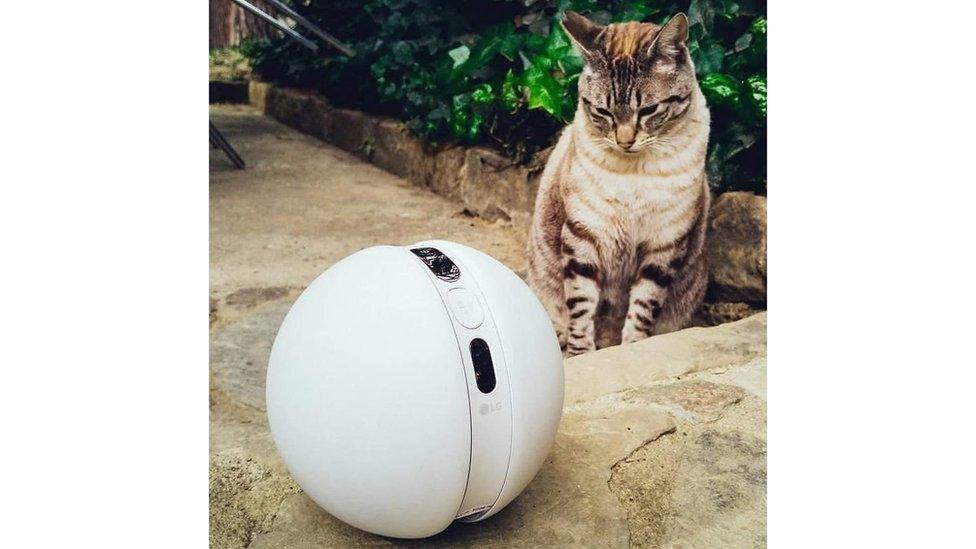
LG also unveiled a robotic ball that can be controlled by its phone and used to turn off the TV
The final accessory unveiled at MWC was a robotic ball with a built-in infrared blaster.
This can be controlled from afar by the smartphone, allowing the user to see and talk to people in their home and control IR-equipped appliances.
'Potential for innovation'
LG was relatively late to the smartphone market, only launching its first Android handset at the end of 2009.
LG added leather to the design of its G4 handset
It is currently the world's sixth best-selling smartphone brand, according to IDC.
However, the research firm's data indicates that LG's market share dropped from 4.6% to 4.2% over the course of 2015.
That suggests recent attempts to make itself stand out - including offering leather-clad phones and models with curved screens - have failed to resonate with as many buyers as hoped.
One company watcher, however, suggested that the G5's standout feature had more promise.
"There's very few examples of expandable modules in handsets - Handspring had the Springboard expansion slot [in 1999] for its PDAs, and of course more recently there's Google's Project Ara," said Ian Fogg from the IHS Technology consultancy.
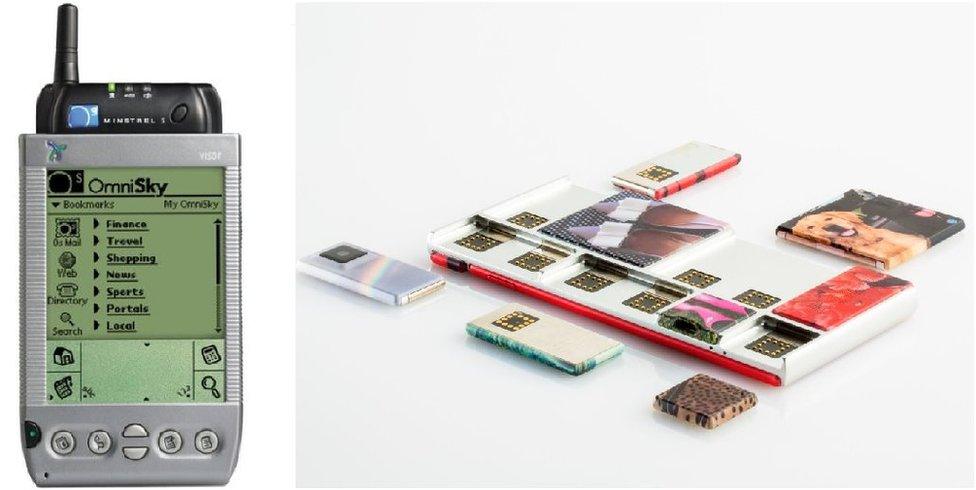
Handspring pioneered add-on modules, and Google's Project Ara is still experimenting with the idea
"What's striking is that the idea is against the main thrust of the market, which has been to integrate everything, even the battery, into the phone so nothing is removable.
"But there's a lot of potential. If you can make a phone where the hardware is versatile you open up more opportunities for innovation - not just for what you build, but potentially for what others build too."

Follow all the BBC's MWC coverage via the "Mobile World Congress 2016" tag in our news app.
You can also keep track of our technology correspondent Rory Cellan-Jones and the rest of the team covering the Barcelona event via a dedicated Twitter list, external.
- Published21 February 2016
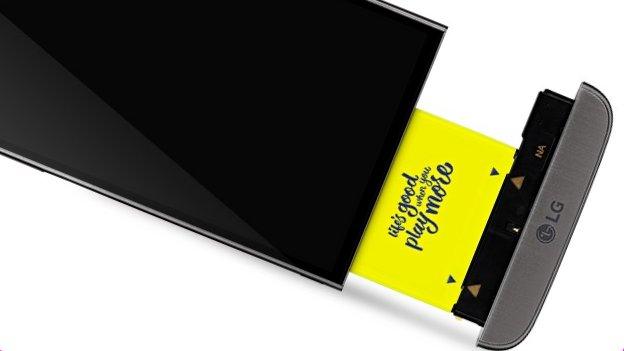
- Published21 February 2016
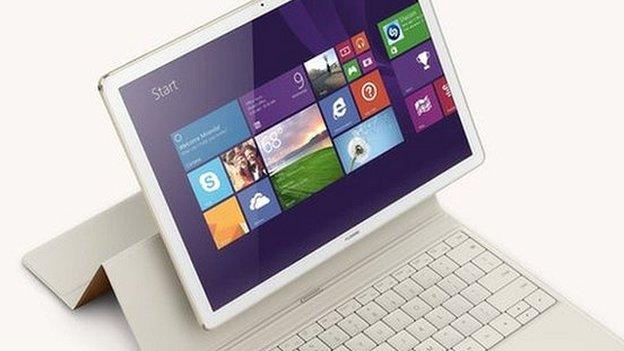
- Published18 August 2015
- Published5 January 2016